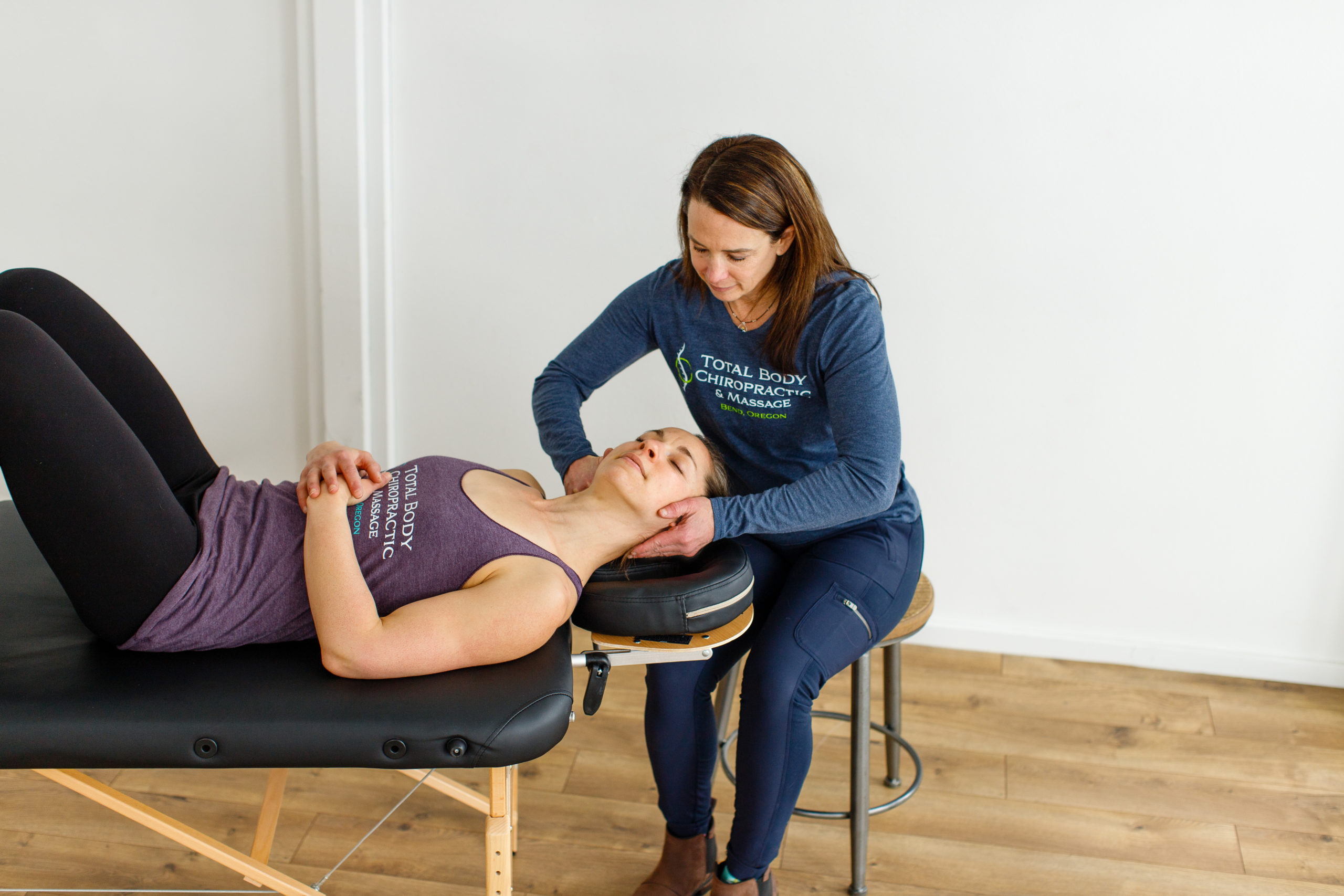Can a Chiropractor Help with TMJ?
Most people suffering from TMJ do not know that a chiropractor can help with it. In the last few years, chiropractors have successfully treated TMJ dysfunction. The temporomandibular joint, otherwise known as TMJ, is the joint that lies between the temporal bone of the skull and the mandible of the jaw. This is the joint that moves whenever your jaw opens and closes.
This joint is constantly moving, whether you’re chewing, laughing, or talking. Over time, there is a possibility for this joint to encounter irritation and dysfunction, which makes TMJ a prevalent condition. This condition is the second most common musculoskeletal condition, which impacts different people uniquely.
What is TMJ?

TMJ is a hinge joint on both sides of your lower joint. This joint connects to the rest of your mouth, and unlike most hinge joints in your body, the TMJ is double-hinged. This means that it moves in all types of directions and not just up and down or side to side.
You must use your TMJ to move your jaw in every direction when chewing food. TMJ pain is joint, and once your TMJ starts to become troublesome, it can mean that you have a TMJ disorder. You can also call TMJ disorders TMD or temporomandibular disorders. TMD and jaw pain can emerge at any time.
On the other hand, it can also occur in the form of chronic pain in your jaws. Many people who suffer from TMJ disorder struggle with opening their mouths widely. It can impact your diet and lifestyle, and if you do not treat it within a specific time, it will worsen.
The signs and common symptoms of TMD include:
- Painful clicking or grinding in your jaw
- Locking jaw on either open and closed mouth conditions
- Pain while talking, opening your mouth, or chewing
- Painful clenching of the jaw
- Headaches
- Neck pain
- Ringing in your ears
While most TMD symptoms resolve in a few weeks or months, certain behaviors and harmful habits can aggravate painful conditions. These habits tend to strain neck muscles and jaw muscles.
Causes of TMJ

Several factors can cause TMJ or TMD, and some of the most common ones include misalignment of the bite. When your bite does not align properly, your TMJ has to work irregularly to chew food properly.
All of the irregular jaw movement will gradually lead to problems in the joint. Another leading cause of TMJ disorder is bruxism, another word for grinding and clenching your teeth. Chronic teeth clenching and grinding will cause excess pressure and lead to an overuse of your TMJ on either side of your mouth.
Ultimately, all the pressures and tensions from biting food too hard will strain the ligament and muscles that allow your TMJ to move. The third common cause of TMJ disorder is arthritis, which is the deterioration of your body’s bone cartilage.
This deterioration does not only affect joints, but also causes TMJ pain. Physical trauma or injury is another common cause of TMJ jaw pain. Automobile accidents or athletic injuries can be very hazardous and permanently damage internal ligaments and discs inside the TMJ.
Being able to tell that you have TMJ disorder is manageable. Headaches and ear pain are the first things you can look for to determine if someone suffers from TMJ. Popping and clicking sounds when your mouth moves can be a surefire sign that you have TMD as well. Since the TMJ is located immediately next to your ears, the muscles that attach to it spread elsewhere in your face, teeth, and neck.
Therefore, it is common to feel TMJ pain in areas of your body other than the joint itself. This is also why you can treat TMJ pain with a therapy session from the chiropractor.
Can a Chiropractor Treat TMJ?

Some joint stiffness and joint soreness can spring up due to TMJ disorders. This stiffness and soreness are not very intense in the beginning. Due to this, many people tend to ignore this type of pain or stiffness, which becomes highly problematic as time goes on. You have to pay attention to whether your symptoms are more noticeable at certain times of the day.
For instance, if you feel the pain right after you wake up, it could be because you were continuously clenching and grinding in your sleep due to TMD. A chiropractor is a trained professional who can stimulate sensitive nerve points and treat muscular stiffness with increased proficiency. It is safe to say that a chiropractor can alleviate the muscle pain and stiffness that TMJ disorders cause.
When your joints are stiff, they do not move as well. This also applies to your TMJ or the joint in your jaw. People suffering from TMD cannot open their mouths with a full range of motion. This makes eating a difficult task for the person suffering. A chiropractic session successfully opens up the joints and regains the long-lost range of motion.
Therefore, a chiropractor is a professional way to treat TMJ. In some rare situations, joint locking can occur, where you cannot move your mouth. This can be very scary and require immediate medical attention. There are a few ways in which a chiropractor can treat TMJ disorder. Chiropractic treatments include:
- Spinal Decompression – To extend your spine, your chiropractor will utilize a pressure table or motorized equipment. A vacuum effect is created in the spinal column to retract enlarged or herniated discs that damage the sciatic nerve.
- Electrical Muscle Stimulation – By using electrical pulses, muscle contractions are initiated to relieve muscle spasms and to maintain balance and control of nerves and muscles around the head and neck. It is often used for rehabilitation and can be utilized to alleviate pain from TMJ.
- Spinal Adjustment – Chiropractic adjustments aid in the restoration of normal alignment in the afflicted location as well as the entire spine. This therapy relieves any nerve constriction and promotes proper nervous system function.
- Myofascial Release – This physical treatment entails applying persistent pressure to the trigger points that strain your nerves. This action relaxes constricted muscles, providing immediate pain relief. Muscle tension will improve significantly.
Your chiropractor will perform a physical examination and review your medical history during your first sessions to select the best treatment approach. They will also create a personalized treatment plan to alleviate your TMD symptoms across numerous sessions and improve jaw function.
While you may notice pain alleviation in the jaw area after the first session, it may take up to four chiropractic visits to thoroughly treat your symptoms. To avoid recurring symptoms, your treatment regimen may include at-home workouts, cold-hot compressions, massages, and lifestyle changes.
General Self-Care for TMJ/TMD

If you have experienced signs of TMD, a healthcare practitioner would recommend avoiding extreme jaw movements. This means that you should refrain from opening your mouth wide or forcefully. Yawning, singing, or yelling often requires you to open your mouth rapidly. Ensure you avoid foods that cause too much stress on the jaws.
Eat soft foods and keep away from crunchy or more complex foods. You will also benefit if you stop taking large bites and foods that require prolonged chewing before swallowing. Take notice of unhealthy habits that can exacerbate TMJ symptoms, such as chewing nails and lips and resting your jaw on your hand.
Also, be vigilant of clenching or keeping your teeth together. Be conscious of grinding your teeth and also tensing your jaw muscles. You can also trigger TMD symptoms by pushing your tongue against your teeth.
Maintain the resting position of your jaw, and place your tongue lightly on the roof of your mouth. Once you have done that, begin to say “NO” slowly. Keep your teeth apart, and relax your jaws and lips together. Another excellent self-help tip would be to keep your posture straight.
If you are sitting at a computer or desk workstation for a prolonged time, take frequent postural breaks. When driving, you can adjust your seat to the upright position, and even in leisure settings, you can sit upright and use pillows behind your back for stable support.
If you’re sitting and standing posture resembles a slump or a curve, correct it to an upright position. You have to raise your chest bone and sternum and place your shoulders back by gently pressing on the shoulder blades. When sleeping, ensure that you have good pillows that support your neck, and sleep on your back instead of on your stomach.
Book an Appointment!
Total Body Chiropractic in Bend can fully treat your TMJ. We will collaborate to create a personalized treatment plan that alleviates your pain and improves your overall well-being and health. After all, the secret to feeling healthiest is to adjust your spine. Schedule an appointment today and leverage our expert consultation and quality chiropractic care.

